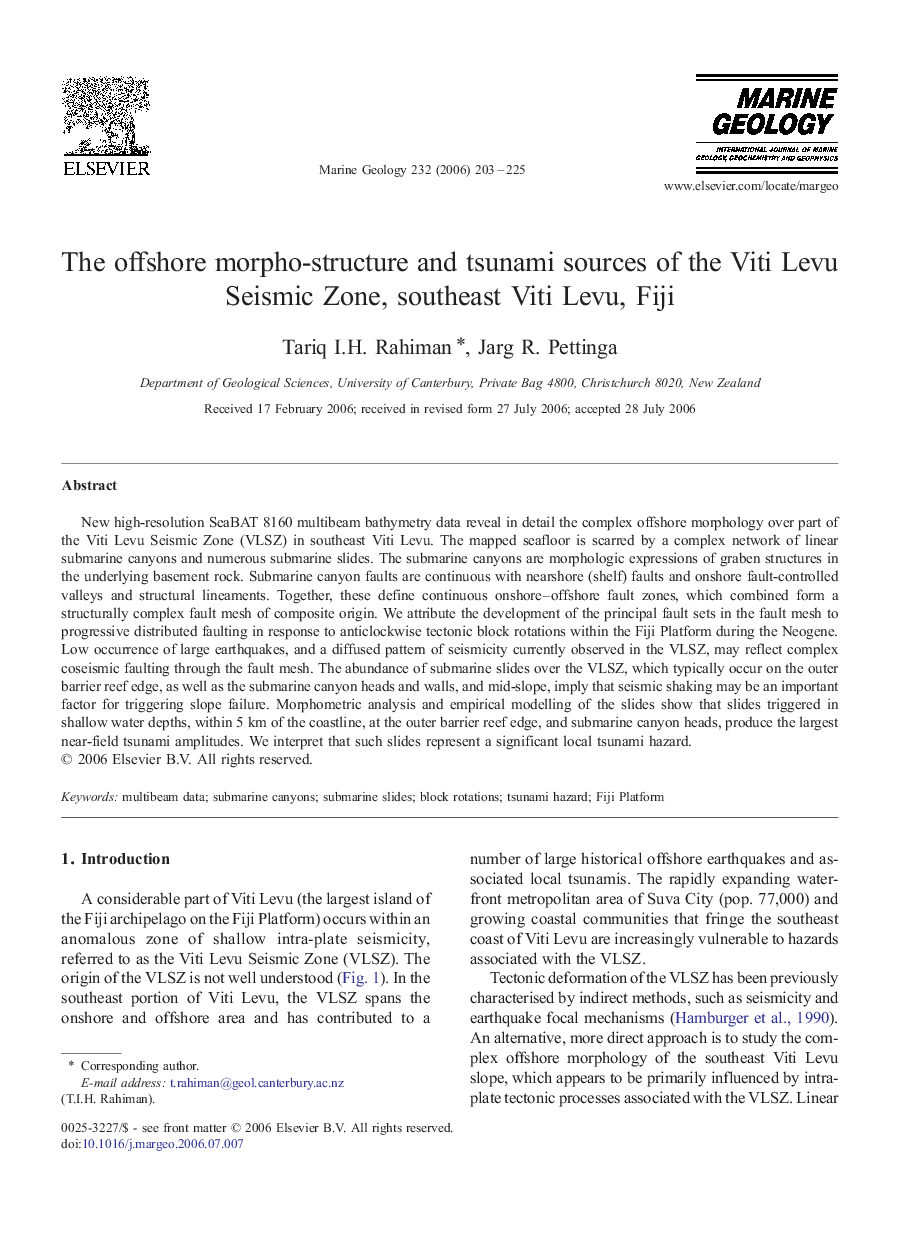| Article ID | Journal | Published Year | Pages | File Type |
|---|---|---|---|---|
| 4719666 | Marine Geology | 2006 | 23 Pages |
Abstract
New high-resolution SeaBAT 8160 multibeam bathymetry data reveal in detail the complex offshore morphology over part of the Viti Levu Seismic Zone (VLSZ) in southeast Viti Levu. The mapped seafloor is scarred by a complex network of linear submarine canyons and numerous submarine slides. The submarine canyons are morphologic expressions of graben structures in the underlying basement rock. Submarine canyon faults are continuous with nearshore (shelf) faults and onshore fault-controlled valleys and structural lineaments. Together, these define continuous onshore-offshore fault zones, which combined form a structurally complex fault mesh of composite origin. We attribute the development of the principal fault sets in the fault mesh to progressive distributed faulting in response to anticlockwise tectonic block rotations within the Fiji Platform during the Neogene. Low occurrence of large earthquakes, and a diffused pattern of seismicity currently observed in the VLSZ, may reflect complex coseismic faulting through the fault mesh. The abundance of submarine slides over the VLSZ, which typically occur on the outer barrier reef edge, as well as the submarine canyon heads and walls, and mid-slope, imply that seismic shaking may be an important factor for triggering slope failure. Morphometric analysis and empirical modelling of the slides show that slides triggered in shallow water depths, within 5Â km of the coastline, at the outer barrier reef edge, and submarine canyon heads, produce the largest near-field tsunami amplitudes. We interpret that such slides represent a significant local tsunami hazard.
Related Topics
Physical Sciences and Engineering
Earth and Planetary Sciences
Geochemistry and Petrology
Authors
Tariq I.H. Rahiman, Jarg R. Pettinga,
